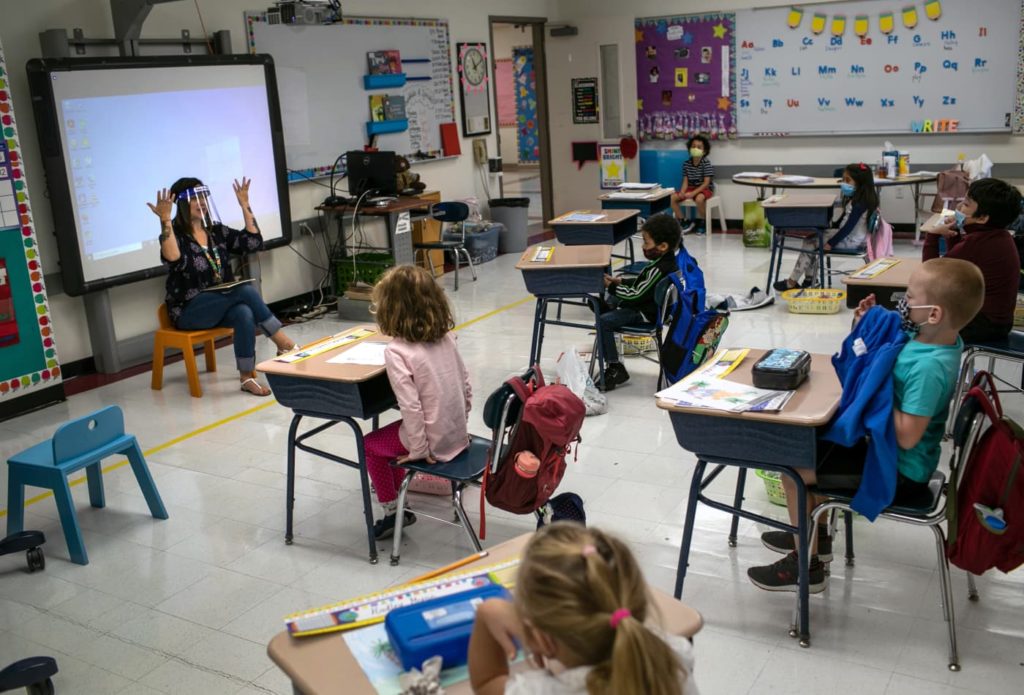Front Line Workers and COVID: Teachers Edition

The nation’s treatment of front line workers, from meat packers to grocery store workers, has been an atrocity in the age of COVID. We call them “heroes,” something they certainly did not ask for when they took that job and therefore because of their heroic status, they don’t need any job protectors or wage gains or anything like that. Complete cynicism from employers, utter indifference from the general population.
Teachers are a little bit tougher because we care enough about our kids to do just about anything, such as double down on racism while denying that we are acting racist by doing so. After all, little Madison and Connor just Deserve The Best. All of this means that we have at least a greater tendency to listen to teachers than to other front line workers. But that doesn’t mean that when they talk and complain about their working conditions that employers care.
Computer science teacher Suzy Lebo saw COVID-19 dangers frequently in her Indiana high school: classes with about 30 students sitting less than 18 inches apart. Students crowding teachers in hallways. Students and staff members taking off their masks around others.
“I’m concerned,” said Lebo, who teaches at Avon High School in the Indianapolis suburbs. “We’re not controlling the virus in our county. We’re not controlling it in our state. And we’re not controlling it in our schools.”
President Joe Biden’s COVID-19 response proposes $130 billion to improve school safety, offers federal guidance for making schools safer and improves workplace protections to safeguard teachers and other workers from COVID-19.
This comes after many school districts and states holding in-person classes have ignored recommendations from public health officials or written their own questionable safety rules – creating a tinderbox where COVID-19 can sicken and kill.
A KHN analysis of federal and state Occupational Safety and Health Administration data found more than 780 COVID-19-related complaints covering more than 2,000 public and private K-12 schools. But those pleas for help likely represent only a small portion of the problems, because a federal loophole prevents public school employees from lodging them in 24 states without their own OSHA agencies or federally approved programs for local and state employees. Still, the complaints filed provide a window into the safety lapses: Employees reported sick children coming to school, maskless students and teachers less than 6 feet apart, and administrators minimizing the dangers of the virus and punishing teachers who spoke out.
KHN also found that practices contradicting safety experts’ advice are codified into the patchwork of COVID-19 rules put out by states and districts. For instance, about half of states don’t require masks for all students – including 11 that have exempted schoolchildren of various ages from mandatory masks, with New Hampshire excluding all K-12 students. Districts can craft stricter rules than their states but often don’t.
I’d like to think that after this is all over, we as a society will rethink all the levels of inequality and indifference to safety that led to these disasters. But that’s extremely unlikely. We are unlikely to change anything at all.


